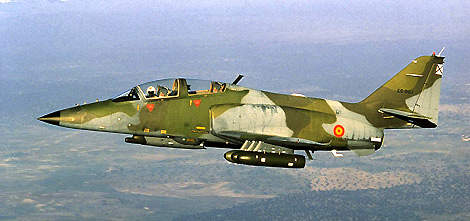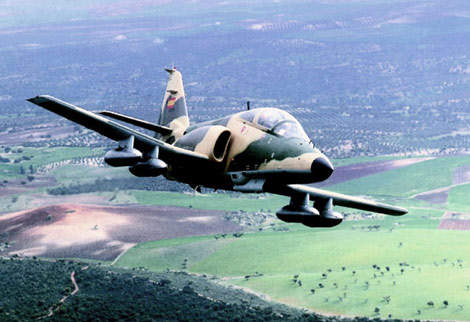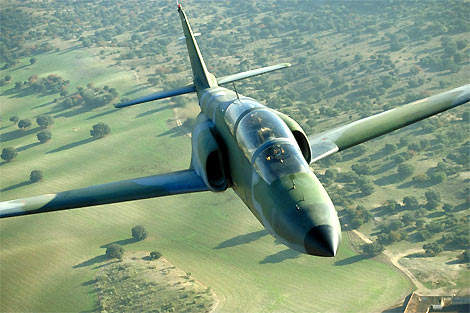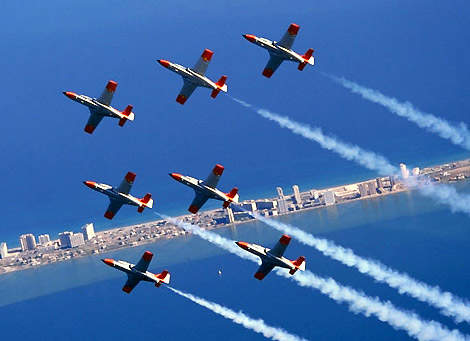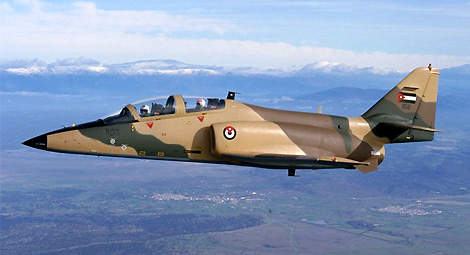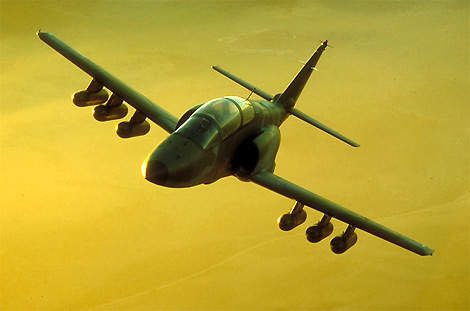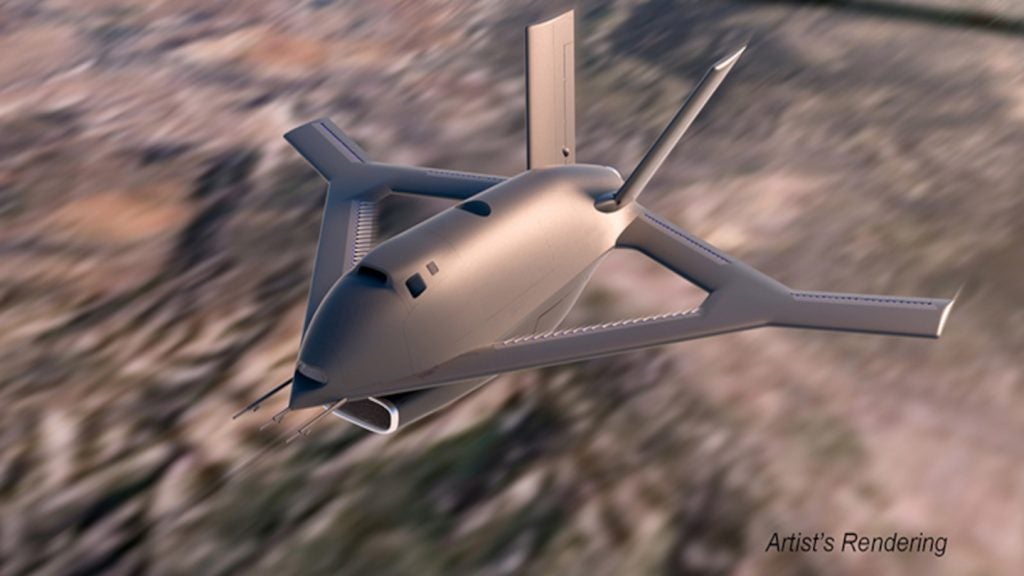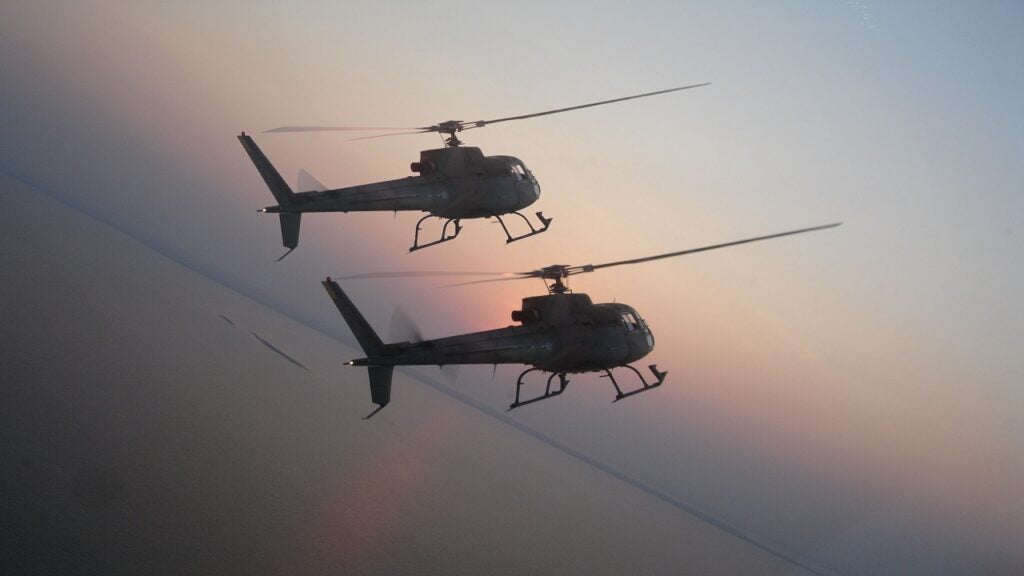The C-101 Aviojet is a jet trainer and ground attack aircraft designed and manufactured by EADS CASA, based in Madrid, Spain. The C-101 is currently operated by the air forces of four countries: Chile, Honduras, Jordan, and Spain. Over 151 aircraft are in service with the Spanish Air Force. The C-101 is a high-performance aircraft capable of carrying out ground attacks, reconnaissance and photographic missions, and electronic warfare countermeasures.
C-101 DD trainer and ground attack aircraft
The C-101 DD is the latest design version of the CASA C-101. Equipped with an Integrated Navigation and Attack System (INAS), the C-101 DD allows the pilot to develop skills in flight and armament management techniques. The operational modes provided by the system are identical to those being integrated into modern combat aircraft, thus providing efficient pilot training in air navigation techniques and air-to-air and air-to-ground attack procedures.
The INAS includes a Head-Up Display (HUD), air data and mission computers, an inertial platform and a control/display unit. All the INAS equipment is integrated with the armament control and other essential units through a MIL-STD-1553B digital data bus.
Cockpit
The main controls for aircraft management and armament operation are grouped on the Hands On Throttle and Stick (HOTAS). The HOTAS arrangement ensures maximum efficiency when using the aircraft as a weapons system.
The HUD is the pilot’s primary information instrument. The control and display unit allows the pilot to input and monitor the mission data and to select the operation modes and the track points.
The data presented on the HUD are the flight parameters, steering parameters and the attack data. The steering parameters are presented in either the self-contained navigation mode or in the radio-aided navigation mode. The attack data is displayed in Continuously Computed Impact Point (CCIP) mode for ground attack manoeuvres and for air-to-air manoeuvres the attack data is presented on the HUD in Continuous Tracking (CT) mode or in Continuously Computed Impact Line (CCIL) mode.
The cockpit is equipped with two Mk10 zero/zero ejection seats supplied by Martin-Baker of Uxbridge, UK. The cockpit is pressurised and air conditioning is provided by an engine air bleed system developed by Hamilton Standard.
Weapon system
The weapons bay is located in the centre of the fuselage below the rear cockpit position. The aircraft also has six hardpoints on the wings.
The weapons bay has the capacity to carry a laser designator, reconnaissance or countermeasures systems, a 30mm cannon complete with 130 rounds of ammunition, or a twin Browning M3 12.7mm machine gun with 440 rounds.
The underwing hardpoints are capable of carrying a 2,250kg payload, including LAU-10, BR-250 and BR-125 bombs, LAU-3A rocket launchers or AGM-65 Maverick missiles.
Armed with four 19in x 2.75in rocket launchers and a 30mm DEFA553 cannon with 130 rounds, the aircraft is capable of a 50 minute loiter time over the battle area and 8 minutes over the target area with a 30 minute fuel reserve.
Armed with two Maverick missiles and a 30mm cannon the aircraft can remain for 8 minutes over the target area with a 30 minute reserve.
Avionics
The advanced avionics suite includes an air data computer, a mission computer, radar altimeter and a video recorder.
The Continuously Computed Impact Point (CCIP) mode for air-to-ground attack and the Continuous Tracking (CT) and Continuously Computed Impact Line (CCIL) modes for air-to-air combat enable the C-101 DD to train in modern combat techniques. The available attack modes provide flexibility in terms of firing conditions and high-level weapon aiming and delivering accuracy.
Navigational accuracy is achieved in autonomous mode based on the data supplied by the inertial platform and in using the information provided by the radio-navigation sensors.
Garrett TFE-731-2 turbofan engine
The aircraft is powered by a single Garrett TFE-731-2 turbofan engine that provides1 5.8kN of thrust with a specific consumption of 0.5lb/lbf-hr.
The thrust-to-weight ratio of the engine is 4.7:1. The engine is equipped with an annular combustor, a single stage high-pressure turbine and a three-stage low pressure turbine.
Performance
The C-101 can fly at the rate of 6,400ft/min. It has a maximum dive speed of 980km/h and a level speed of 857km/h. The stall speed is 157km/h. The aircraft has a range and service ceiling of 4,000km and 12,500m, respectively.
The endurance of the C-101 is 7 hours. It weighs around 3,800kg and the maximum take-off weight is 5,000kg.

